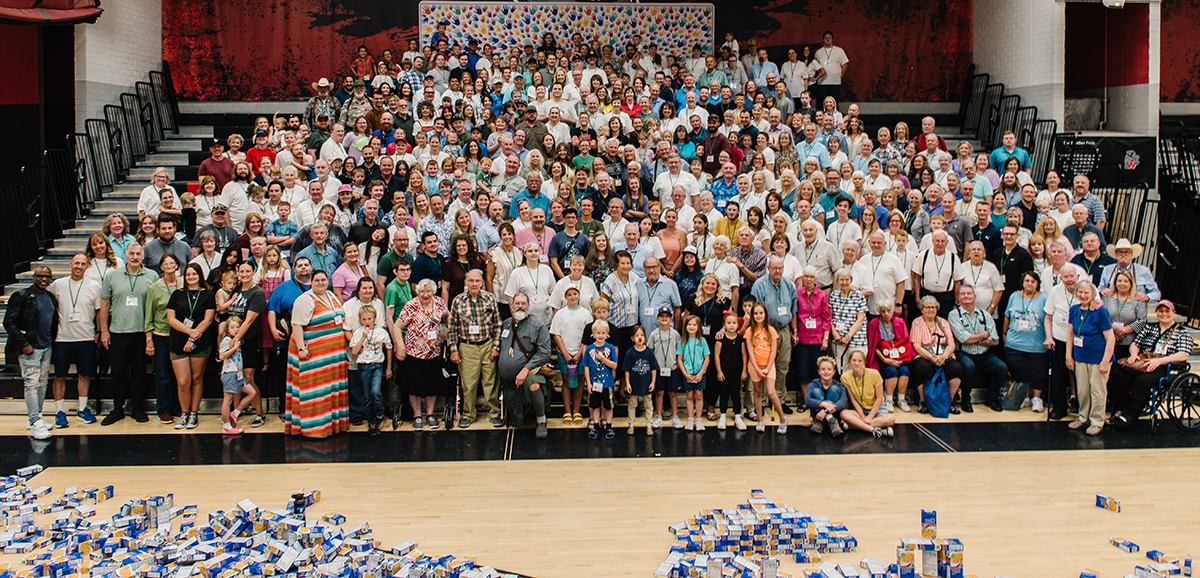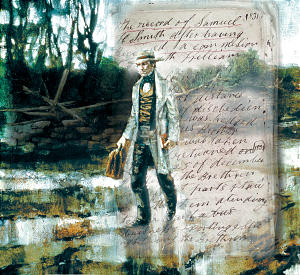http://www.deseretnews.com/article/705381677/Joseph-Smiths-doc-only-man-who-could-save-leg.html?pg=all
Dr. Nathan Smith, who operated on Smith’s leg, was an accomplished surgeon in the 1800s. The procedure was unprecedented, leading some to believe Smiths’ encounter was miraculous.
By Aaron Shill, Deseret News
Published: Saturday, July 12 2008 11:40 p.m. MDT
It took the curiosity of a Boston-area surgeon to uncover the identity of the man who conducted Joseph Smith’s famous leg operation.Once LeRoy Wirthlin made his discovery about four decades ago, it became apparent that Joseph and his family weren’t the only Smiths of significance in the room when the 7-year-old boy underwent surgery around 1813.Dr. Nathan Smith was pretty important in his own right, and Wirthlin’s placing of the once-renowned New England physician within this historic account added an intriguing new facet to the story.It was a historic convergence that saved Joseph’s leg. And Wirthlin, a Latter-day Saint who himself is a retired surgeon, knows just how important Nathan Smith’s presence was.”You wonder what would have happened,” Wirthlin says during an interview conducted for an episode of the Joseph Smith Papers Project television series produced by KJZZ. “One thing for sure is that Joseph Smith would not have been able to kneel in the grove in Palmyra with an above-knee amputation.”Wirthlin isn’t a historian by profession, but his research into Dr. Smith became a great boon to scholars. The discovery not only confirmed existing accounts of the event, but also provided additional details that some, like Wirthlin, consider miraculous. While his role in the surgery is still often overlooked, Nathan Smith gives the long-told story a more expansive place on the historical landscape while enriching Latter-day Saints’ understanding of this significant event of the Restoration.”This was the first miracle that we know about in the life of Joseph Smith,” Wirthlin said.
The beginning of the end for the anonymity of Joseph Smith’s surgeon came when LDS historian Richard Bushman, who at the time was a stake president in Boston, asked Wirthlin to assist him with some research about the operation.Documentation on the surgery is confined to two sources, and Bushman showed Wirthlin one of the accounts — a note from Joseph Smith dictated to Willard Richards that was intended for the Manuscript History of the Church.In his interview for the television series, Wirthlin says he was “astounded” by what he read. Joseph Smith named a medical school (Dartmouth) and the doctors who treated him (Smith, Stone and Perkins), while making reference to 11 “doctors” (some presumed to be medical students) visiting the home.The next day, Wirthlin says, he met a colleague in the elevator at Massachusetts General Hospital who was carrying a book about early New Hampshire surgeons. Wirthlin used the book to identify Nathan Smith and Cyrus Perkins.”That little bit of information then began a quest to dig into this more deeply,” Wirthlin says.The pursuit took him to the Dartmouth Baker Memorial Library, where Wirthlin was given access to Dr. Smith’s letters, notebooks and ledgers for research.What Wirthlin and other researchers have discovered is that Dr. Smith was a highly competent and compassionate physician who, after serving as an apprentice, studied at Harvard before traveling to England to further educate himself. He returned in 1797 and founded the Dartmouth Medical School, one of four medical schools he established throughout his career.Smith was a “country doctor,” according to Ronald K. Esplin, managing editor of the Joseph Smith Papers Project. He rode miles on horseback to visit patients in their homes, since there were no hospitals at the time. While Smith billed the patients and expected payment, many of his treatments ended up being “charity cases” because the recipients were unable to pay, Esplin said.Dr. Smith was also a teacher who had a lasting influence on the region. Wirthlin calls him a “great medical educator” who was competent in anatomy, physics, chemistry and pharmacology medicine.”He left a legacy of students who were the foundation of rural New England medicine for the next generation or two,” Esplin said.According to Smith’s biographers, Oliver S. Hayward and Constance E. Putnam, the physician cared for the welfare of his patients but was also brilliant and innovative.”For the duties of a practical surgeon, Dr. Smith was eminently qualified, and upon the manner in which he performed these duties, his reputation must, in a great measure, ultimately rest,” his biographers write in the book “Improve, Perfect, and Perpetuate: Dr. Nathan Smith and Early American Medical Education.”The most significant aspect of Dr. Smith’s career as it relates to the Prophet was that he resisted using amputation as a means to treat cases such as Joseph Smith’s. Instead, Dr. Smith used a surgical technique to combat osteomyelitis, a bacterial infection, where he operated directly on the bone to remove dead fragments.Joseph Smith’s case was a complication from the typhoid fever epidemic that hit the area, causing what Wirthlin calls “tremendous” and “unrelenting” pain.In addition to what was dictated by Joseph Smith himself, the only other written account of the surgery came from the Prophet’s mother, Lucy Mack Smith, who wrote: “My poor boy at this time was in almost total despair, and cryed(sic) out, ‘Oh father, the pain is so severe, how can I bear it?’ “Dr. Smith’s biographers concur with Wirthlin’s findings — that the accounts of Joseph Smith and his mother provide adequate documentation of Dr. Smith’s involvement in the boy’s surgery.”Both give sufficient detail to make clear that the doctors in question were Nathan Smith and his medical school colleague (and at the time, partner in practice) Cyrus Perkin,” Hayward and Putnam write. “The two separate descriptions of the surgery that circumvented the need for amputation both accord well with what is known about Nathan Smith’s procedures…Thus, although we do not know positively that Smith himself performed the operation, we can be confident that he was the surgeon in charge.”Wirthlin went on to publish three articles about his findings, one of which was printed in the March 1978 edition of the Ensign. According to Esplin, Wirthlin’s work helped re-establish Dr. Smith as a significant figure in American medical history.”By the time Wirthlin got digging around, people had really forgotten Nathan Smith,” Esplin said.
Thanks to the accounts from Joseph Smith and his mother, Latter-day Saints have a sound understanding of the events surrounding the surgery — that Lucy and her son objected to amputation, that Joseph refused to be tied down or accept alcohol, that his father held him through the procedure, and that his mother re-entered the room several times upon hearing her son’s screams.But until Wirthlin’s discovery, not much was known about the surgeon — and that he was likely the only man in the country who could have saved the boy’s leg.And he just happened to reside within short riding distance.”It is truly remarkable that this guy had those skills and he was probably the only one in the United States who had them at the time,” Esplin said.The details of Dr. Smith’s stature and proximity to the Prophet’s family make the circumstances seem at the very least an amazing coincidence, if not miraculous.First, there is the fact that Dr. Smith resided in Hanover, N.H., just a handful of miles from the Smith home in Lebanon.There were also circumstances that factored into Dr. Smith’s availability. According to Wirthlin, Dr. Smith was anticipating a move to Connecticut to establish a medical school at Yale University, but he was delayed by the typhoid epidemic, which struck his own family. Otherwise, he would not have been at Dartmouth when Joseph Smith’s leg required treatment.Historians have surmised that the Smith family may have known of Dr. Smith because, at the time of Joseph’s sickness, his brother Hyrum was attending the Moore Academy at Dartmouth. Esplin points out that neither Alvin nor Joseph had many educational opportunities, but during this particular time, Hyrum was afforded the chance.According to Wirthlin, not only did Dr. Smith have 17 years of experience in practicing the technique before treating Joseph, he was the only surgeon who combated severe osteomyelitis by operating on the bone. The standard procedure at the time was amputation.”This procedure that Nathan Smith advocated was not done anywhere else in the world,” Wirthlin says. “The surgery that he performed did not catch on. Nobody seemed to be able to do it.”In her account, Lucy Smith described the surgery in detail.”He bored first on one side of the bone, which was affected, then on the other side: after which, he broke it off with a pair of pincers; and in this manner, took away large pieces of the bone,” she wrote.According to Wirthlin, the procedure never caught on and wasn’t widely accepted until 1874; it didn’t become standard practice until World War I. A believing Latter-day Saint, Wirthlin, in the 1978 Ensign article, concludes that the circumstances were far from coincidental.”What Lucy Smith is here describing is the technique that became known in 1874!” Wirthlin writes. “How was such a surgical feat possible 80 years before this time in the tiny community of Lebanon, New Hampshire? The answer is one that Latter-day Saints would hardly call coincidence.”Generations ahead of his time, he was the only man in America who could have saved Joseph Smith’s leg.”Dr. Smith’s biographers also reflect on the religious significance of these two individuals crossing paths.”Whether Nathan Smith can be credited with having saved Joseph Smith’s life, certainly he saved the boy’s leg,” they write. “Who knows whether religious history might have turned out quite differently if Joseph Smith had been an amputee from early childhood?”
Dr. Smith’s presence not only added a new facet to the story — it furthered scholars’ understandings of the accounts that have been in place since the mid-1800s.Lucy Smith’s history was written in 1845, approximately 32 years after the leg operation was performed. The length of that time period often caused historians pause, according to Esplin.Then there was Joseph Smith’s description of “eleven Doctors” visiting the home — a number that seemed high before historians came to understand who Dr. Smith was.”But after all this (research) has been done it turned out to be pretty solid description,” Esplin said.According to Wirthlin, Lucy Smith’s detailed description of the surgery proved credible. Wirthlin writes in the Ensign that her recollection aligned with the procedure described in notebooks found at Dartmouth.”They always questioned her memory on this thing but this was accurate and she nailed it and I have developed a great respect for her after reading her account,” Wirthlin says in his interview.While it may have seemed strange that there were more than 10 doctors in the room, Wirthlin points out that as an educator, it was standard procedure for Dr. Smith, who “routinely invited 10 to 20 of the medical students along on these trips as part of their training,” Wirthlin writes.”This was how they operated,” Esplin said. “These are good accounts…(Wirthlin is) the one who made the whole episode understandable.”What the accounts also show, according to Esplin, is that the Smith family was “functional” and worked together to assure each other’s well-being. And, the fact that this episode was the only event from Joseph’s younger years that was recorded by both the Prophet and his mother speaks to its significance.”Both he and his mother thought it was important enough to mention, and they mention almost nothing about his boyhood,” Esplin said. “In their minds, it’s one of the most significant (events) of his pre-teen years — the most significant.”For them, this loomed huge. It was the major event.”
E-mail: ashill@desnews.com




